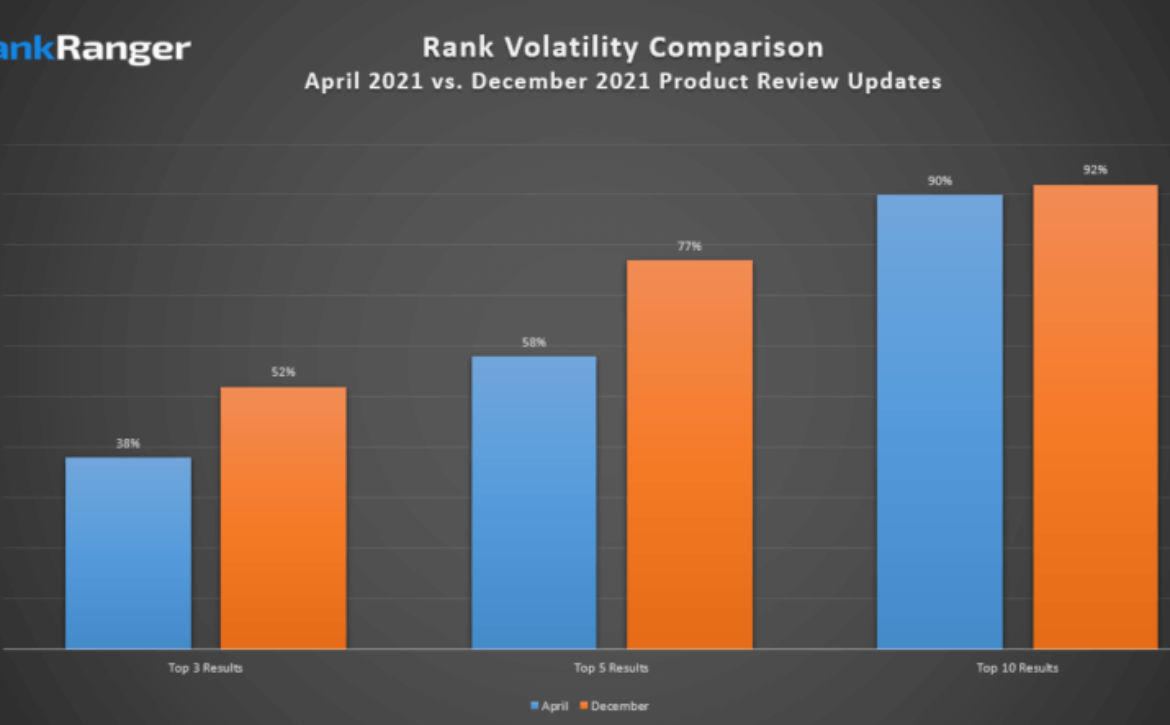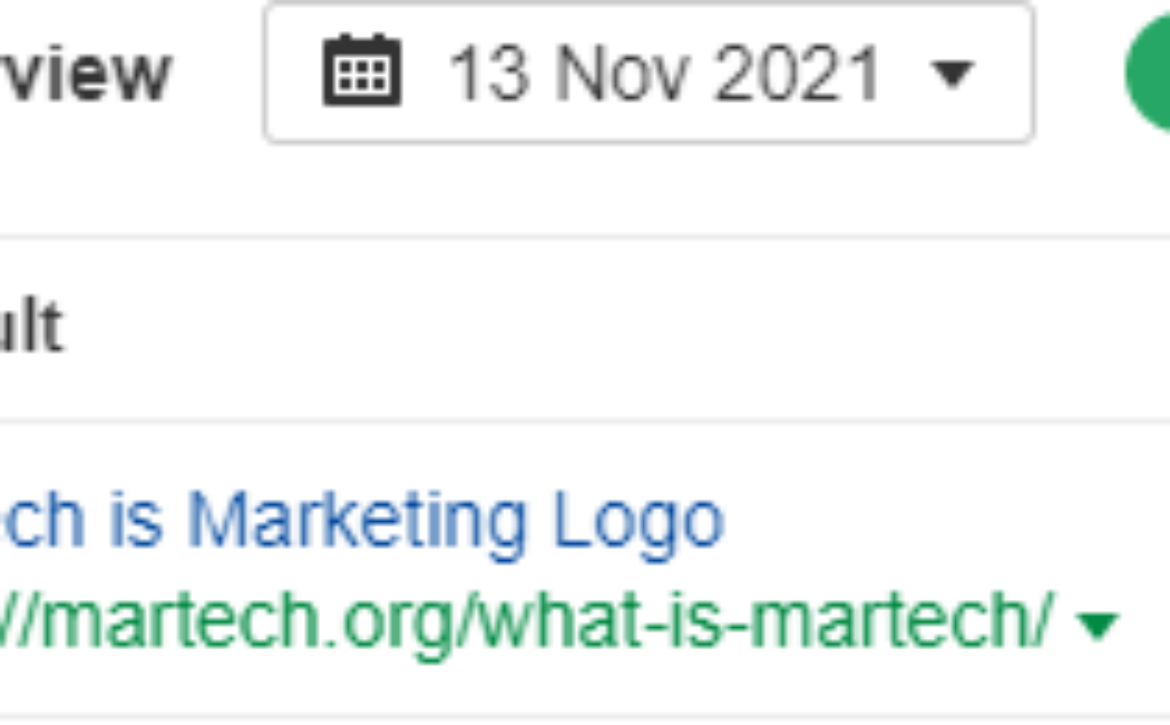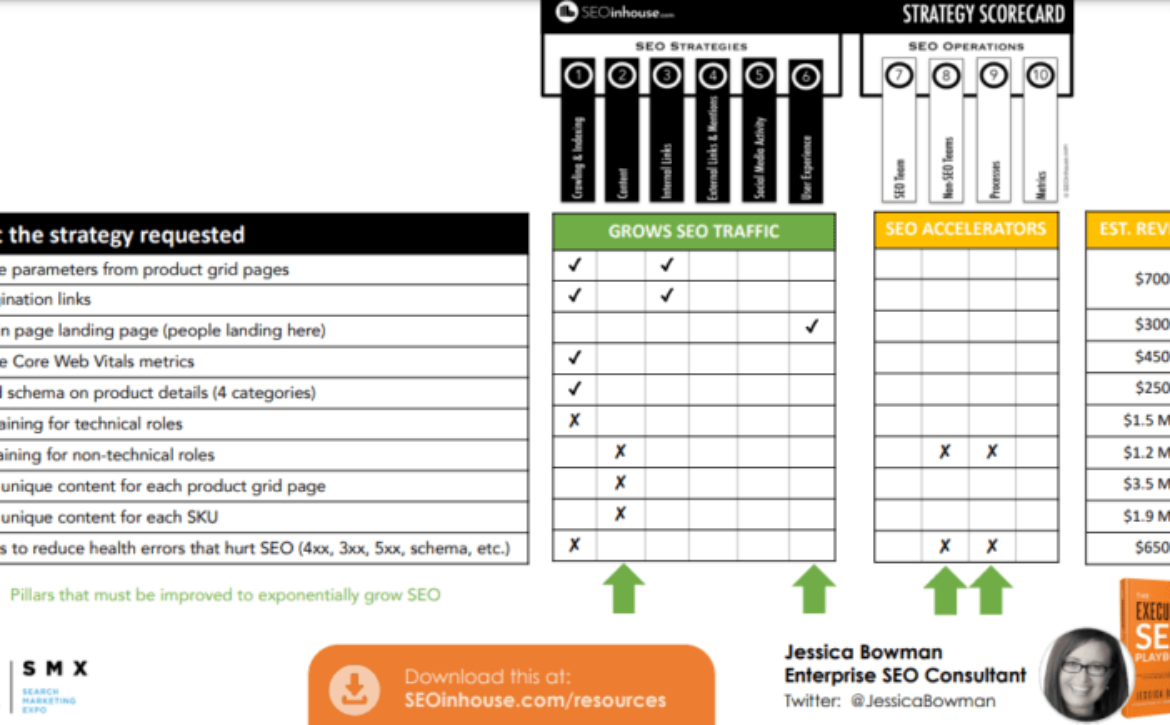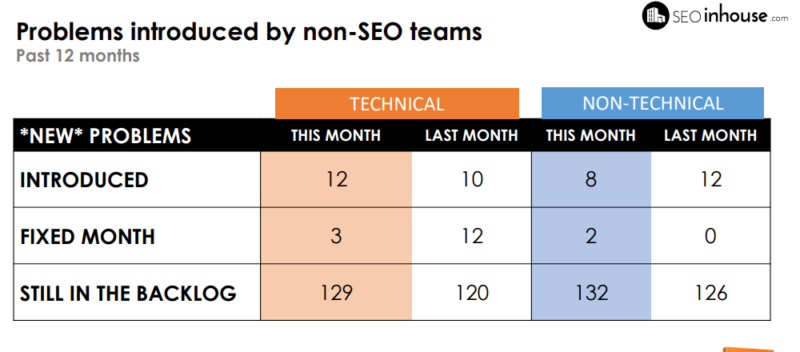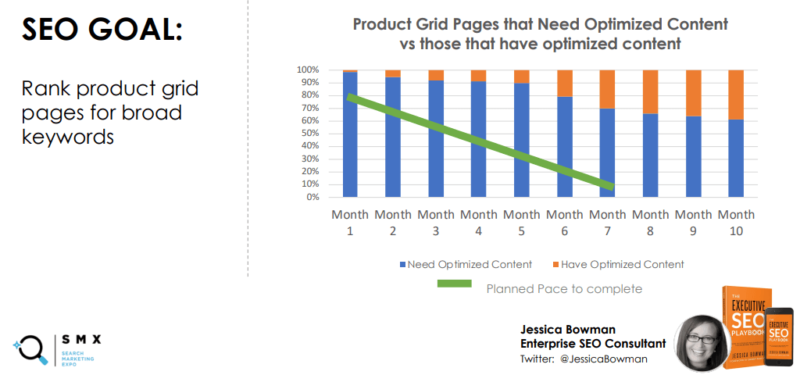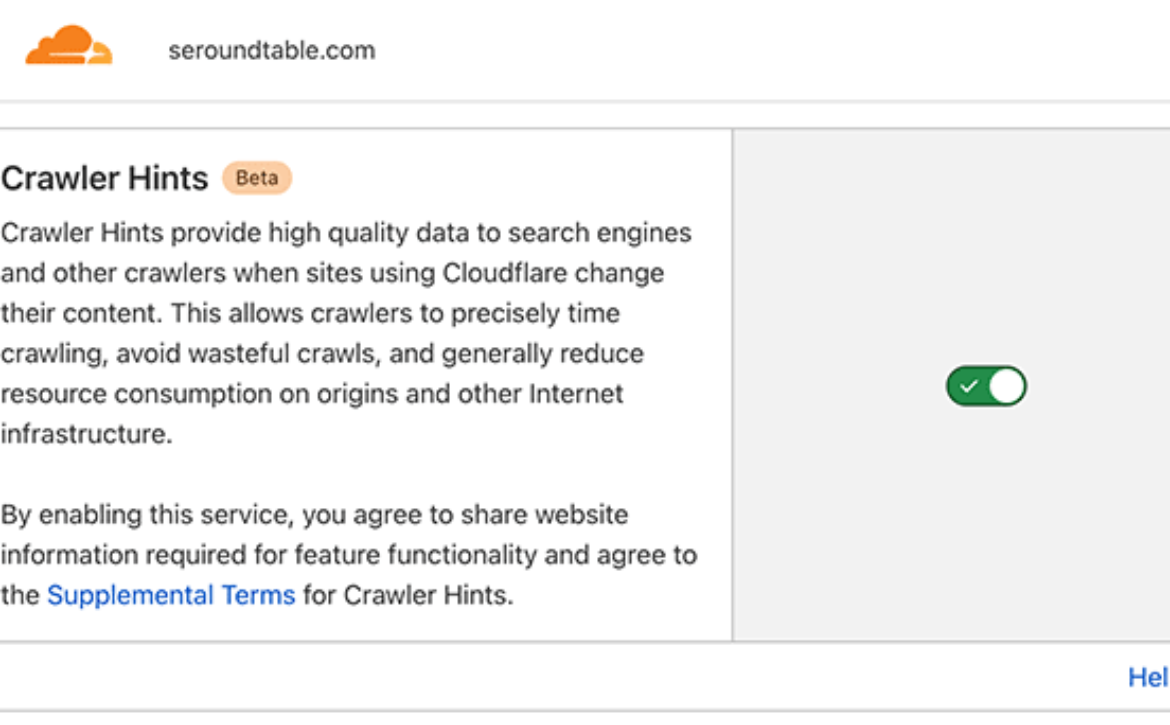Google’s December 2021 product reviews update was bigger than the April product reviews update, say data providers
On December 1, 2021, Google began to roll out the second product reviews update of the year, the December 2021 product reviews update. This was at the tail-end of the November 2021 core update that finished rolling out the day before, on November 30, 2021 (note, this is an important point for this story). RankRanger and Semrush, two SEO toolsets, sent us data that showed that the December 2021 product reviews update was more volatile than the April 2021 product reviews update — but there may be some caveats to that.
Please note that Google told us that this product reviews update will take approximately three weeks to roll out and we are only now in the start of week two. So, the data may change but generally when Google rolls out these updates, the bulk of the impact you would see from an update would be in the first few days of that rollout.
Data providers show December was bigger than April
RankRanger. The RankRanger team first sent us their data showing that overall, the December fluctuations and volatility “were substantially higher in the top three and top five positions,” the company said. This is across comparing the changes in the top-three, top-five and top-ten ranking positions in Google Search:
This is also when looking at average position changes overall between April (in blue) and December (in orange) product reviews updates:

The company also broke down just the December volatility by niche across sectors by top-three, top-five and top-ten results. The company showed the top-five positions both retail and travel stand out as having the most fluctuations and in the top ten results, health and finance showed the most fluctuations.
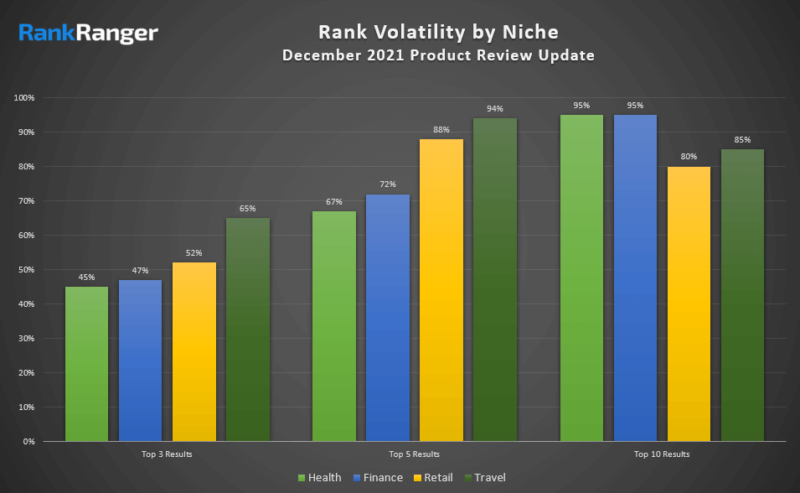
And you can see, the RankRanger index tracker tool is now starting to show this update slow down a bit:

Top winners and losers were also provided by RankRanger, showing Tripadvisor, Choice Hotels, Agoda and Hotwire were the losers and Expedia, Kayak, U.S. News & World Report were the top gainers.

Semrush. The Semrush team first sent us their data showing that overall the December fluctuations and volatility also peaked at much higher rates than the April product reviews update. The company said that the volatility highs seen during the December update are far greater than what was recorded in the April update.

But Semrush said that if you look at the overall volatility, it would appear that the April update was 44% more volatile than the December update. That is likely because this year overall was a lot more volatile than previous years, sending the numbers a bit off overall. If you look at level of volatility as compared to what Semrush normally would see, the April Product Review Update was significantly more volatile. Here is that chart showing this data:

But again, this is not a normal year and the chart showing the peak volatility is probably a better measurement of which update was more significant.
Semrush also broke down this update by vertical for the top-five and top-ten search results. The shopping vertical seemed to have seen the most drastic movement with 6% of the top ten coming from positions 20+ — that would make sense, being this is a product reviews update.
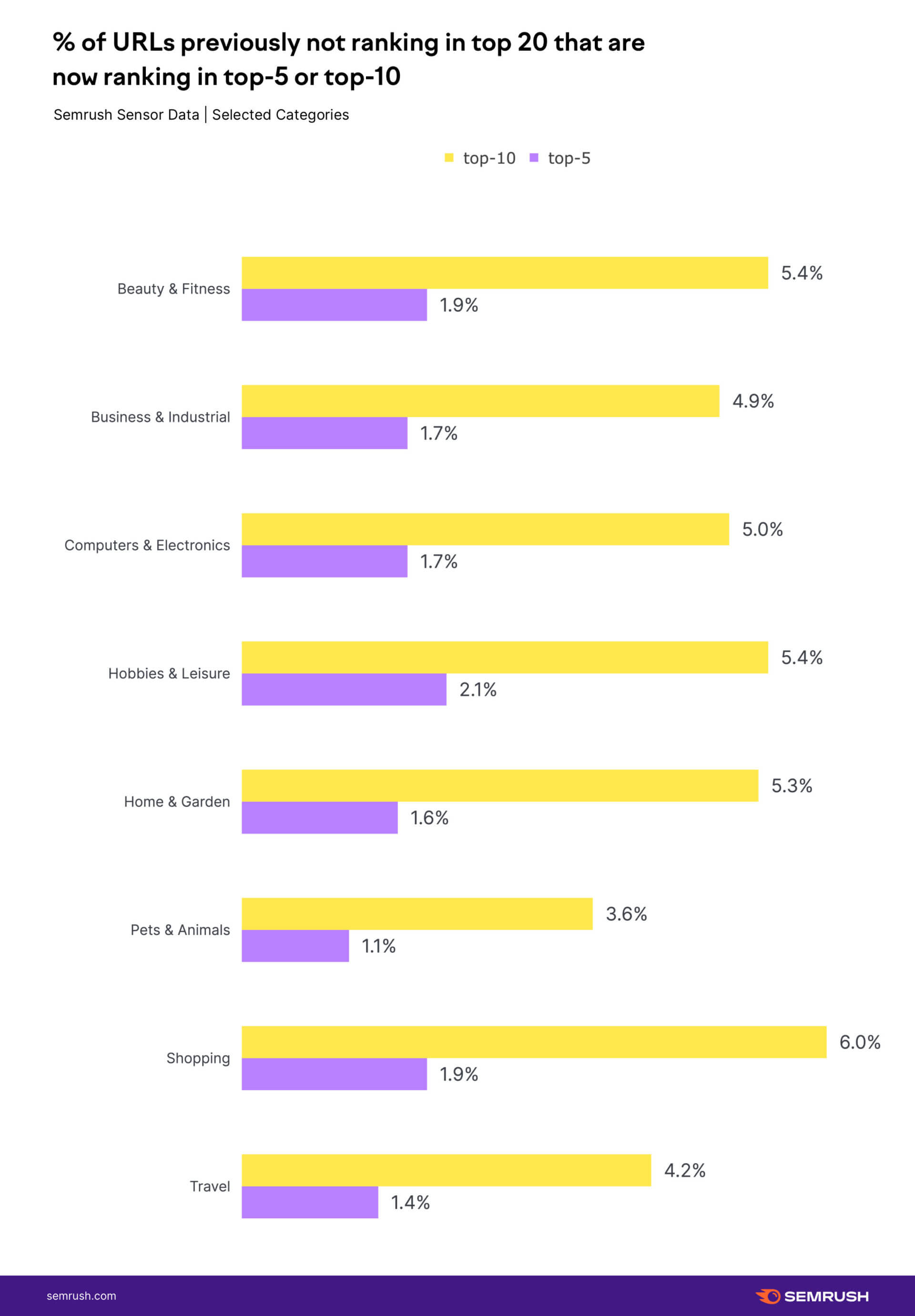
The Semrush sensor tool is now starting to show this update somewhat slow down a bit:
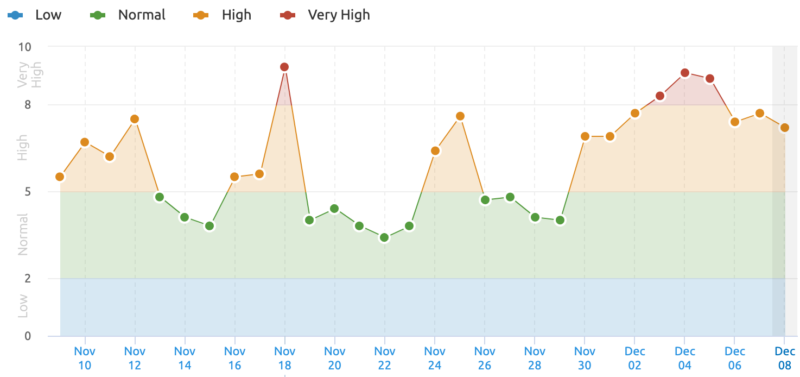
Core update impact, if any?
Like I said above, this year overall was a lot more volatile than previous years, which may be setting some of this tracking off a bit. We just finished rolling out the November 2021 core update about 24 hours before the December product reviews update started to roll out. It is possible the tracking tools data may have some overlap. Between it being a crazy year with volatility in general, both in terms of confirmed and unconfirmed updates, and the confirmed updates being very close together, it is hard to say with 100% confidence which update was bigger.
Semrush did tell us that the November 2021 core update was bigger than the December product reviews update, but they are two different types of updates and that makes sense. In fact, The December product reviews update is not showing huge amounts of movement compared to the November core update, Semrush said.
In fact, Sistrix, another tool provider, told us early on that they did not see huge changes with this update and didn’t have data to share with us overall. They simply didn’t see huge changes with the products reviews update in general.
More on the December 2021 products reviews update
The SEO community. The December 2021 product reviews update, like I said above, was likely felt more than the April version. I was able to cover the community reaction in one blog post on the Search Engine Roundtable. It includes some of the early chatter, ranking charts and social shares from some SEOs. In short, if your site was hit by this update, you probably felt it in a very big way.
What to do if you are hit. Google has given advice on what to consider if you are negatively impacted by this product reviews update. We posted that advice in our original story over here. In addition, Google provided two new best practices around this update, one saying to provide more multimedia around your product reviews and the second is to provide links to multiple sellers, not just one. Google posted these two items:
- Provide evidence such as visuals, audio, or other links of your own experience with the product, to support your expertise and reinforce the authenticity of your review.
- Include links to multiple sellers to give the reader the option to purchase from their merchant of choice.
Google product reviews update. The Google product reviews update aims to promote review content that is above and beyond much of the templated information you see on the web. Google said it will promote these types of product reviews in its search results rankings.
Google is not directly punishing lower quality product reviews that have “thin content that simply summarizes a bunch of products.” However, if you provide such content and find your rankings demoted because other content is promoted above yours, it will definitely feel like a penalty. Technically, according to Google, this is not a penalty against your content, Google is just rewarding sites with more insightful review content with rankings above yours.
Technically, this update should only impact product review content and not other types of content.
Why we care. If your website offers product review content, you will want to check your rankings to see if you were impacted. Did your Google organic traffic improve, decline or stay the same? Long term, you are going to want to ensure that going forward, that you put a lot more detail and effort into your product review content so that it is unique and stands out from the competition on the web.
We hope you, your company and your clients did well with this update.
More on Google updates
Other Google updates this year. This year we had a number of confirmed updates from Google and many that were not confirmed . In the most recent order, we had: The July 2021 core update, Google MUM rolled out in June for COVID names and was lightly expanded for some features in September (but MUM is unrelated to core updates). Then, the June 28 spam update, the June 23rd spam update, the Google page experience update, the Google predator algorithm update, the June 2021 core update, the July 2021 core update, the July link spam update, and the November spam update rounded out the confirmed updates.
Previous core updates. The most recent previous core update was the November 2021 core update which rolled out hard and fast and finished on November 30, 2021. Then the July 2021 core update which was quick to roll out (kind of like this one) followed by the June 2021 core update and that update was slow to roll out but a big one. Then we had the December 2020 core update and the December update was very big, bigger than the May 2020 core update, and that update was also big and broad and took a couple of weeks to fully roll out. Before that was the January 2020 core update, we had some analysis on that update over here. The one prior to that was the September 2019 core update. That update felt weaker to many SEOs and webmasters, as many said it didn’t have as big of an impact as previous core updates. Google also released an update in November, but that one was specific to local rankings. You can read more about past Google updates over here.
The post Google’s December 2021 product reviews update was bigger than the April product reviews update, say data providers appeared first on Search Engine Land.


